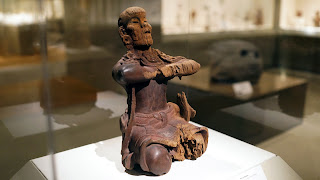The Paracas Textile
The Paracas Textile, woven from cotton and camelid fiber, discovered in southern Peru
A Textile is a type of cloth or woven fabric. One of the most incredible textiles of pre-Columbian America is the Paracas Textile. Dating back to nearly 2,000 years ago, the Paracas Textile comes from the south coast, Paracas, Peru.
The Paracas Textile measures two by five feet. Despite this textile being relatively small in size, it is said to contain a vast amount of information about the people who lived in ancient Peru.
The Paracas Textile is currently a part of a collection at the Brooklyn Museum of Art and has been since 1938. Despite the age and delicacy of the textile it is said to still show vibrant colors and all of the fine details are still perfectly intact. They say that the arid climate in southern Peru is so dry, any organic materials that may be buried there can actually be preserved.
These textiles were used in the Paracas Peninsula to wrap the dead in bundles, very similar to that of a mummy. The larger in status and wealth you were, the more intricate and grand the bundles. These bundles contained brightly embroidered textiles, feather, and even fine jewelry. This was done to preserve the bodies of highly important figures.
Lois Martin, "The Paracas Textile," in Smarthistory, August 9, 2015, accessed November 12, 2020, https://smarthistory.org/the-paracas-textile/.



Jeremy,
ReplyDeletenice post. I also decided to write about these textiles. What did you think of the photos depicting just how the wove these? They vaguely remind me of my girlfriends grandmothers afghan blankets. I would love to be wrapped in one of those. I really enjoy that they were made in such great detail that you couldn't really tell which way was the proper "up". Overall, good job.
Hi Jeremy!
ReplyDeleteI wonder what purpose these textiles served in the afterlife (if there was one?). Your blog post is very informative and well written! I wonder how exactly the cloth was made that it was preserved so well outside of climate factors. Great post!
Hi, Jeremy , very interesting post, glad you brought this piece up this week. My favorite thing about this textile is the border. It is so intricate and the process is very intimidating.
ReplyDelete